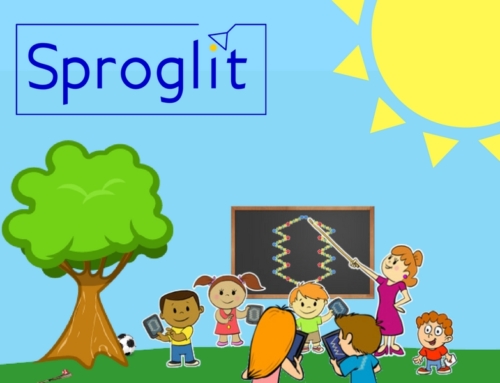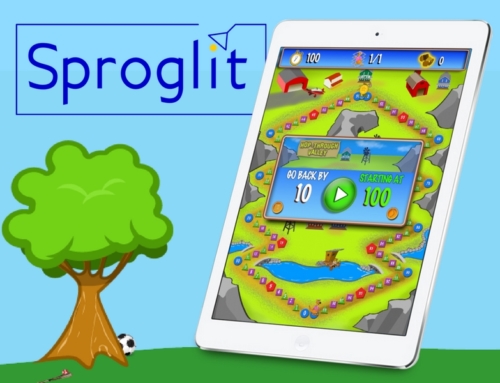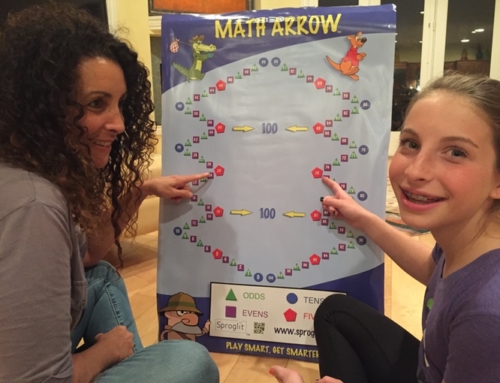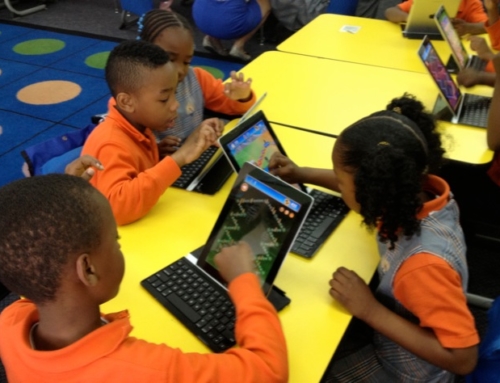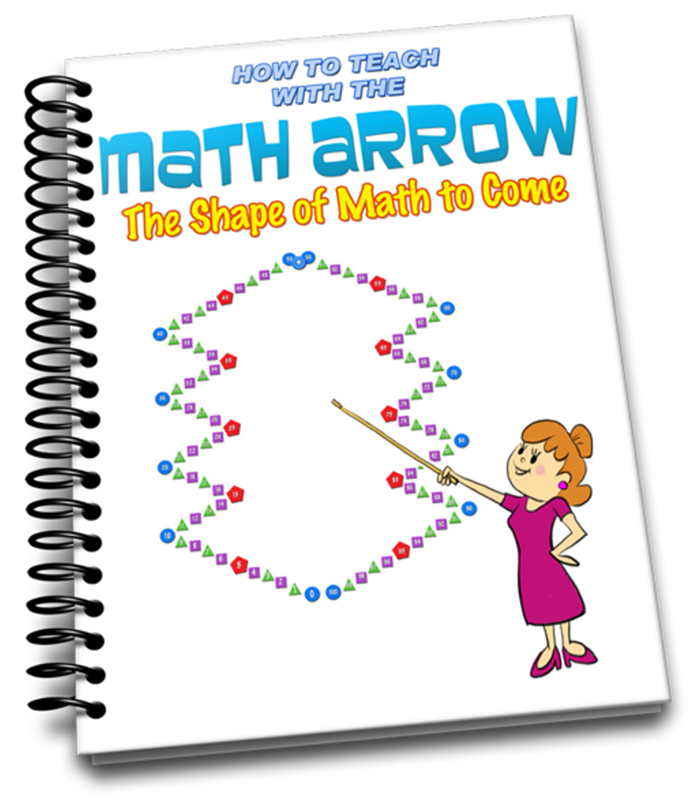San Diego, California
Release date: 31 July 2013
Back-to-School App Boosts Math Scores by 11% in an Hour.
Todd Buchholz, former economic adviser to President George HW Bush, and winner of Harvard’s annual teaching prize in economics was in New York today for the official launch of his new educational app ‘Kyle Counts.’
The app is based on Buchholz’s Math Arrow technology – a revolutionary approach to teaching children numeracy skills. It is the first release from new education technology start-up, Sproglit, which is seeking to reinvent the way children are taught basic numeracy skills.
The ‘Math Arrow,’ unlike other educational math applications avoids drilling facts in a way that soon bores young children. Instead, it is based on the latest neuroscientific discoveries that reveal children and adults learn best by seeing patterns.
The Math Arrow is a map of numbers, lined up from 0 to 100 in a unique pattern. Players are tasked with helping the cartoon character ‘Kyle the Kangaroo’ escape crocodiles on his way home by making intuitive connections between numbers on the map.
Commenting on the launch of his new app, CEO of Sproglit, Todd Buchholz explained: “As our Asian counterparts streak ahead in the international math tables, we face a crisis in US competitiveness if we do not do something to catch up. Fortunately the US is one of the most innovative nations on earth. By challenging our conventional tools we can help improve the numeracy skills of young people today.”
A controlled test of first grade classrooms carried out by researchers at Brigham Young University reported a significant improvement in arithmetic scores after less than an hour playing the Kyle Counts game. Children who played ‘Kyle Counts’ for ten minutes a day for five days saw on average an eight percent improvement in the math test they completed before and after playing.
Mary Tucker, a teacher in San Diego, described Kyle Counts as “an excellent tool”, adding: “The colorful game board effortlessly facilitates an understanding of prime and composite numbers, factors and multiples, as well as operations. Another huge plus – this game is very fun, with a crocodile chase, rewards and storyline built in. In fact, when I tested the game with my own kindergartener son, he couldn’t wait to play it again.”
The Math Arrow: Kyle Counts game is available from the Apple App Store and priced at $4.99. ‘Kyle Counts’ has also received tremendously positive pre-launch reviews from a number of high profile education and technology specialists, including Martin Cooper, inventor of the cell phone, who described it is as “ingenious.”
The Math Arrow was recently featured by the Mathematical Association of America, which asked whether it will go on to replace the conventional number line in classrooms worldwide to introduce children to addition, subtraction, multiplication and division.
Buchholz explained his motivation to set up Sproglit was driven by frustration at the illogical processes currently taught to young math learners: “When a child is asked to work out 100 – 69, we tell them to get out a pen and paper and start a lengthy process of breaking down the 100, borrowing, etc. By the time we’re adults, we’ve figured out that 31 is correspondent to 69: together they make 100. With Sproglit, we’re removing that confusing procedure and bringing children straight into an intuitive way of thinking.”
The prominent US economist was inspired by trips to architectural landmarks in Paris and the US. “I was in Paris, staring at the crossbeams of the Eiffel Tower, and then in New York and Chicago, looking at the Citicorp tower and the Hancock building. They are made up of evenly spaced support structures. I wondered, why can’t we create a physical structure, like these buildings, to enable children to visualize the structure of arithmetic with their own eyes?”
The US launch comes shortly after a study, published by the National Academy of Sciences of the United States of America (PNAS), that identified a strong correlation between low borrower numerical ability and high mortgage repayment defaults. Those borrowers with poor numeracy skills were three times more likely to face foreclosure than their higher skilled peers.
The study measured the financial literacy and cognitive ability of subprime mortgage borrowers who took loans out in 2006-2007. The results were then set against the statistics for foreclosure amongst this group of borrowers.
More than 20% of borrowers categorized as having low numerical ability faced property repossession, compared with only 7% of high numerical ability borrowers.
Todd interprets these results as a clear sign that the US math education system needs to be radically improved. He has said, “We have always known good numeracy skills significantly enhances a pupil’s chance of success in the workplace, but this study proves it could also be a question of losing your home. We have a duty to equip young people with the skills they need to juggle all life’s hard financial decisions.”
Notes to Editors:
For the full report on the impact of Sproglit’s ‘Kyle Counts’ App on math performance see: http://byuresearch.org/home/papers/sproglit.byu.report.pdf
Media Inquiries: Please contact Beatrice Timpson from Media Intelligence Partners on:
Email: Beatrice(at)mippr(dot)co.uk Cell: +447803 726 977
About Todd Buchholz:
Todd G. Buchholz is an economist and has served as White House director of economic policy under George H.W. Bush and a managing director of the Tiger hedge fund. He was awarded the Allyn Young Teaching Prize by the Harvard University Department of Economics and was named “One of the Top 21 Speakers of the 21st Century” by Successful Meetings magazine. Businessweek and Bloomberg have reported that Buchholz is on the short-list for a White House appointment to the Federal Reserve Board.
A founder of the G7 Group consulting firm, Todd Buchholz holds advanced degrees in economics and law from Cambridge University and Harvard and during 2009, served as a Fellow at Cambridge. His books have been translated into over a dozen languages.
Buchholz frequently contributes commentaries on political economy, financial markets, business and culture to the New York Times, Wall Street Journal and Washington Post, as well as PBS, NPR and major television networks. He hosted his own special on CNBC and is the only person to guest-host CNBC’s Squawk Box two days in a row.
Buchholz resides primarily in San Diego, California and travels the world delivering keynote presentations on economics, finance and innovation to such companies as Microsoft, IBM and General Electric, as well as governmental organizations. He has lectured in the U.K. Parliament, as well as at the White House library and the U.S. Treasury.
About Sproglit:
Sproglit seeks to employ innovative learning methodologies to develop engaging educational tools for children. The tools help children to develop their skills in a fun and exciting learning environment.
The organizations ultimate aim is to revolutionize education by creating innovative engaging games that challenge children to practice basic skills they learn in school; at all levels, in a variety of subjects.
The company’s core values are:
The company is a dynamic new start-up. Its proprietary methods are based on the inventions of Todd Buchholz, winner of Harvard’s annual teaching prize in economics.
About the Math Arrow:
The Math Arrow is a matrix designed to make the relationship among numbers more intuitive and to enhance the learning of mathematical functions. Unlike a number line, which extends horizontally and infinitely, the Math Arrow aligns numbers in a parallel zigzag design. The Math Arrow has a number of unique characteristics that allow users to detect patterns in the relationship of numbers. Among them are:
